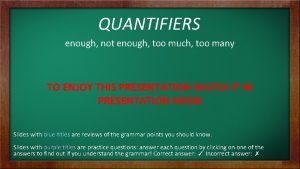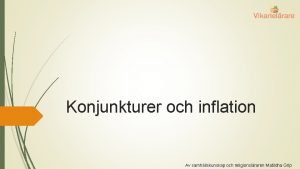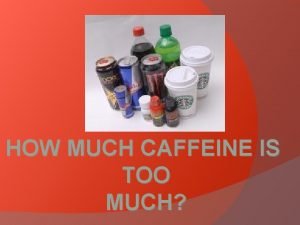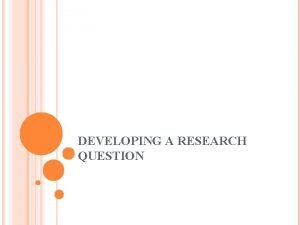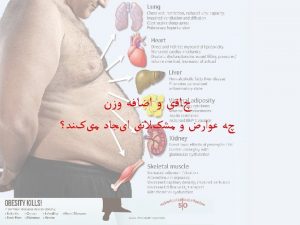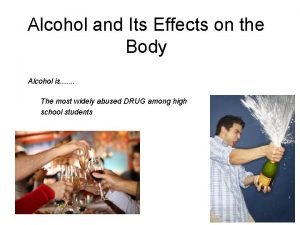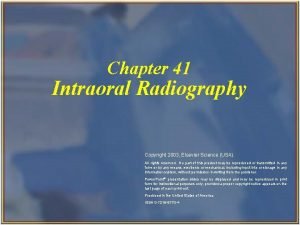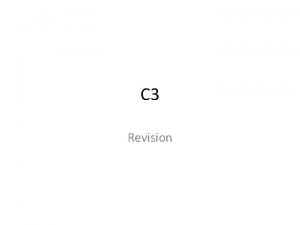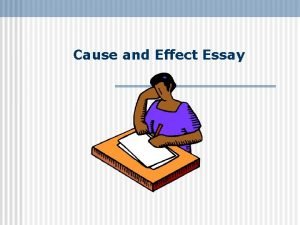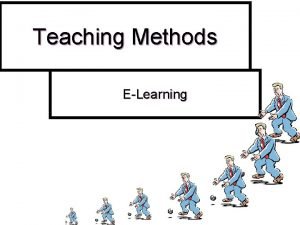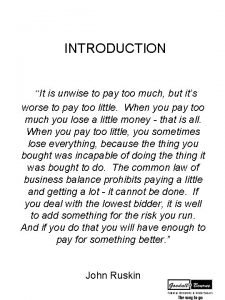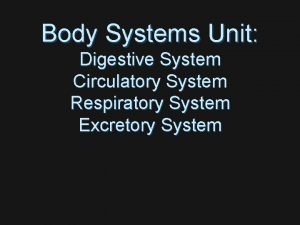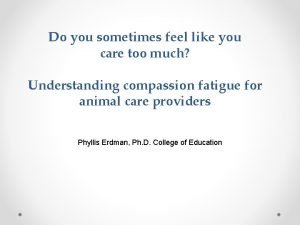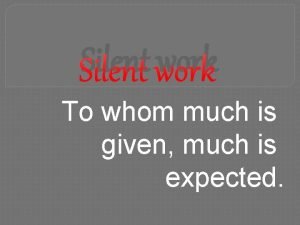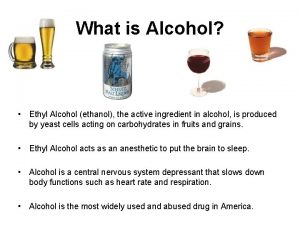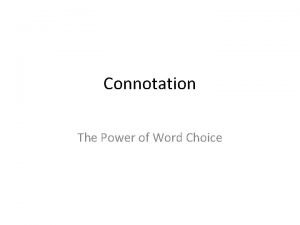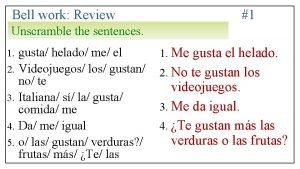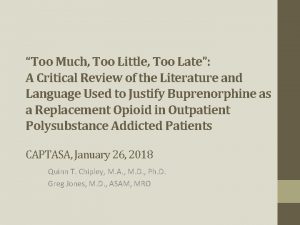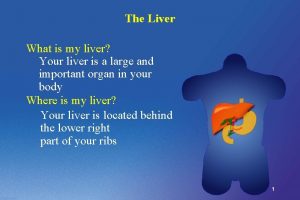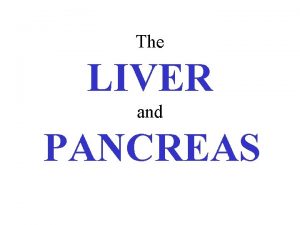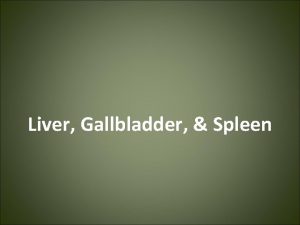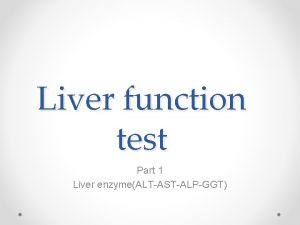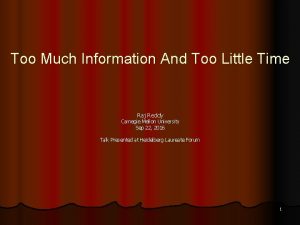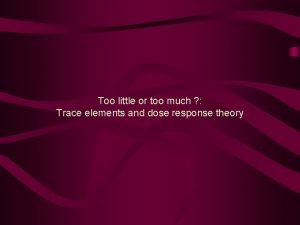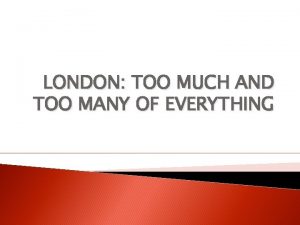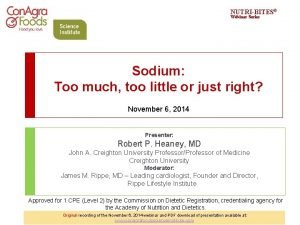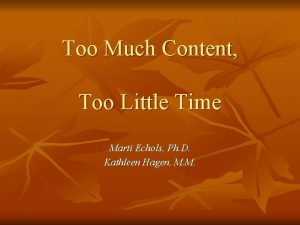Alcohol and Your Liver Too Much Alcohol is












































- Slides: 44

Alcohol and Your Liver Too Much Alcohol is Bad for Your Liver Anna Lembke, MD Department of Psychiatry and Behavioral Sciences Stanford, University Medical Center Stanford, California @AMSP 2010 1

Your Healthy Liver @AMSP 2010 2

Healthy Hepatic Portal Triad @AMSP 2010 3

Your Liver on Alcohol @AMSP 2010 4

Cirrhosis close-up @AMSP 2010 5

This Lecture Reviews n How a healthy liver metabolizes Et. OH n How too much Et. OH damages the liver n How much is too much n How to help @AMSP 2010 6

This Lecture Reviews n How a healthy liver metabolizes Et. OH n How too much Et. OH damages the liver n How much is too much n How to help @AMSP 2010 7

Alcohol Metabolism ADH ALDH CH 3 CH 2 OH CH 3 CHO CH 3 COOH Ethanol Acid Acetaldehyde @AMSP 2010 Acetic 8

Et. OH Metabolized Faster n Male n High body mass n Heavy drinker n Fast metabolizer @AMSP 2010 9

ALDH 2*2, 2*2 n n Homozygotes (ALDH 2*2, 2*2) n Vomiting , diarrhea, etc. n No alcoholics Heterozygotes (ALDH 2*2) n Alcohol reaction but not ill n Less alcoholism @AMSP 2010 10

Alcohol Dehydrogenase (ADH) Mutations n Faster ↓ Et. OH n Faster ↑ acetaldehyde n Slightly ↓ alcoholic risk @AMSP 2010 11

This Lecture Reviews n How a healthy liver metabolizes Et. OH n How too much Et. OH damages the liver n How much is too much n How to help @AMSP 2010 12

Alcoholic Liver Disease (ALD) n Damage to liver by alcohol n Typically occurs in progression n Fatty liver n Alcoholic hepatitis n Cirrhosis @AMSP 2010 13

Step 1: Fatty Liver n ADH metabolizes Et. OH n ↑ Acetaldehyde and free radicals n Acetaldehyde more toxic than alcohol n Mild inflammation n Fat cell proliferation @AMSP 2010 14

Fatty Liver n Almost all heavy drinkers n Usually asymptomatic n Reversible n @AMSP 2010 15

Healthy Liver vs Fatty Liver @AMSP 2010 16

Step 2: Hepatitis n Alcohol release of toxins from gut n Liver Kuppfer cells release cytokines n Decrease inflammation n But also ↑ cell death @AMSP 2010 17

Alcoholic Hepatitis n Up to 35% of hazardous drinkers n Usually reversible @AMSP 2010 18

Step 3: Cirrhosis n Liver cell death n ↑ Stellate cells n Specialized liver cell n Normal healing n Scarring n Disrupts architecture n Impairs function @AMSP 2010 19

Cirrhosis ~ 20% after 10 years hazardous use n 12 th leading cause of death in adults n Damage irreversible n @AMSP 2010 20

Other ALD Risk Factors n Genetic n n n Diet ↑’s risk n n n ALDH 2*2 protects ADH 1 C 2 ↑ risk Drink without food ↑ Polyunsaturated fats Obesity ↑ Iron ↑ Blood sugar Gender: ↑ Risk in women (2 x mortality) @AMSP 2010 21

This Lecture Reviews n How a healthy liver metabolizes Et. OH n How too much Et. OH damages the liver n How much is too much n How to help @AMSP 2010 22

ALD Dose Dependent n More Et. OH x more time ↑ risk ALD n >2 drinks/daily ↑ risk ALD n AUDIT-C > 5 ↑ risk ALD n Standard drink = n n n 12 oz. beer 4 oz. wine 1. 5 oz. whiskey @AMSP 2010 23

Screening Tests for Consumption n n Time-Line-Follow-Back (TLFB) Method n Counting backwards from today n Standard drinks per day n Total standard drinks per week Alcohol Use Disorders Identification Test for Consumption (AUDIT-C) @AMSP 2010 24

AUDIT-C n 3 Questions How often do you have an Et. OH drink? n How many drinks per drinking day? n How often > 6 per occasion? n n AUDIT-C Scores (0 -12) 0 = non-drinker n 1 -4 = low level drinker n 5 -8 moderate Et. OH misuse n 9 -12 severe Et. OH misuse n @AMSP 2010 25

Hazardous Alcohol Use ↑ Risk ALD n Men n> 14 drinks/week or n > 4 drinks on any occasion n Women n> 7 drinks/week or n > 3 drinks on any occasion n AUDIT-C score > 5 n 1 -2 drinks most days or n > 6 per occasion some days @AMSP 2010 26

Et. OH in Moderation Healthy? n Moderate drinkers vs. non-drinkers n ↓Mortality n ↓G. I. illnesses n ↓Gastritis, gallstones n ↓Cardiovascular disease n ↓Dementia (vascular and Alzheimer’s) n Results may be misleading @AMSP 2010 27

Abuse vs. Dependence Abuse ( ≥ 1) n n Role failure Risk of harm n Run-ins with law n Relationship trouble Dependence (≥ 3) n Tolerance Withdrawal n Not sticking to limits n Not able to cut down n Spending time Et. OH n Less time elsewhere n Despite problems n @AMSP 2010 28

This Lecture Reviews n How a healthy liver metabolizes Et. OH n How too much Et. OH damages the liver n How much is too much n How to help @AMSP 2010 29

Et. OH Misuse is Prevalent n 77% Low-risk or abstention n 16% Hazardous or at-risk use n 7% Abuse or dependence n Almost 1 out of 4 is misusing Et. OH @AMSP 2010 30

Screen for Et. OH Consumption n Time Line Follow-Back (TLFB) Method n Alcohol Use Disorders Identification Test for Consumption (AUDIT-C) n Single Question Screen: ”How many times in the past year have you had…? ” >4 drinks/day men n >3 drinks/day women n @AMSP 2010 31

Gamma-Glutamyl Transferase (GGT) n ↑ Before damage to liver; GGT > 35 IU/L n If GGT >51, may signal liver damage n ↑ in 75% of chronic heavy drinkers n Not specific to ALD (70% specificity) @AMSP 2010 32

Carbohydrate Deficient Transferrin (CDT) n Plasma protein carries iron to bone n > 2. 6% suggestive of 5+ drinks/day n Sensitivity/specificity slightly > GGT @AMSP 2010 33

Liver function tests (ALT/AST) n Alanine transaminase (ALT) n n Aspartate transaminase (AST) n n (9 -60 IU/L normal range) (10 -40 IU/L normal range) AST/ALT ratio > 2/1 n suggestive of ALD @AMSP 2010 34

Intervene at Level of Need Drinking type Intervention type Abuse/Dependence Treatment Hazardous Use Brief intervention Low risk/abstention No intervention @AMSP 2010 35

If Hazardous Use… n Try “SBIRT” n Screening, brief intervention, referral to tx. n SBIRT can ↓ avg. # drinks/week by ~25% n Assess, Advise, Agree, Assist, Arrange @AMSP 2010 36

If Abuse or Dependence… n Refer to 12 -step mutual help groups Alcoholics Anonymous n Double Trouble in Recovery n Narcotics Anonymous n n Refer to higher level of AUD care Day treatment n Residential n Clean and sober living environment n Consider medications n @AMSP 2010 37

Medications for Et. OH; Use with Care in ALD n Naltrexone: 50 -150 mg/daily n Acamprosate: ~ 2 g/daily n Disulfiram: 250 mg/daily @AMSP 2010 38

Treating ALD n Stop drinking n Limit medications n Low sodium diet @AMSP 2010 39

Reduce Ascites n Diuretic n Paracentesis n Antibiotics n Transjugular intrahepatic portosystemic shunt (TIPS) @AMSP 2010 40

Control Variceal Bleeding n Vasoconstrictor medications n Shunts: redirect blood flow n Endoscopic variceal banding @AMSP 2010 41

Minimize Encephalopathy n Lactulose Powerful laxative n Prevents build-up of gut ammonia n n Dose = up to 60 m. L/day n Low protein diet n Avoid Sedatives @AMSP 2010 42

Summary: How to Help n Screen n n Intervene n n n TLFB/AUDIT-C One question Abuse or Dependence Hazardous use SBIRT, MM Dependence AA, day treatment, residential Treat ALD n n Control ascites, varices, encephalopathy Liver transplant @AMSP 2010 43

Take-Home Message n Too much alcohol is bad for your liver n Too much = n Men > 14 drinks/wk, > 4 drinks/occ. n Women > 7 drinks/wk, > 3 drinks/occ. n AUDIT-C > 5 @AMSP 2010 44
 Quantifiers too much too many enough
Quantifiers too much too many enough Too much money is chasing too few goods
Too much money is chasing too few goods How much caffeine is too much
How much caffeine is too much How much is too much plagiarism
How much is too much plagiarism Romeo and juliet shared sonnet
Romeo and juliet shared sonnet Margo and her parents each other often
Margo and her parents each other often Religious imagery in romeo and juliet
Religious imagery in romeo and juliet Megan and ron ate too much and felt sick
Megan and ron ate too much and felt sick Too broad and too narrow examples
Too broad and too narrow examples Rational of the study
Rational of the study Too broad and too narrow examples
Too broad and too narrow examples Not too broad and not too narrow
Not too broad and not too narrow Effects of alcohol on the liver
Effects of alcohol on the liver алкоголь
алкоголь Effects of alcohol on the liver
Effects of alcohol on the liver Not too big not too small just right
Not too big not too small just right Too foreign for here too foreign for home
Too foreign for here too foreign for home Too blessed to be stressed too anointed to be disappointed
Too blessed to be stressed too anointed to be disappointed So might i standing on this pleasant lea
So might i standing on this pleasant lea The world is too much with us analysis
The world is too much with us analysis The world is too much with us is a sonnet
The world is too much with us is a sonnet Security is always excessive until it's not enough
Security is always excessive until it's not enough Basic principles of the bitewing technique include the
Basic principles of the bitewing technique include the Deacon process
Deacon process Never too much of a good thing
Never too much of a good thing Cause and effect introduction
Cause and effect introduction Which fertilizer is high in nitrogen
Which fertilizer is high in nitrogen Too much compassion
Too much compassion We think too much
We think too much It is unwise to pay too much
It is unwise to pay too much Too much gravity
Too much gravity Path of food through the body
Path of food through the body Caffeine uses
Caffeine uses I feel like i care too much
I feel like i care too much To whom much is given much is expected meaning
To whom much is given much is expected meaning 3 types of alcohol
3 types of alcohol High boiling point alcohols
High boiling point alcohols Oxidation primary alcohol
Oxidation primary alcohol Maybe dats your pwoblem too
Maybe dats your pwoblem too Your answer is too short (use at least 9 words).
Your answer is too short (use at least 9 words). Give us your hungry your tired your poor
Give us your hungry your tired your poor Thank you very much for attention
Thank you very much for attention Thank you for your attention!
Thank you for your attention! Write the answer on your notebook
Write the answer on your notebook In your notebook write questions about the next school year
In your notebook write questions about the next school year
